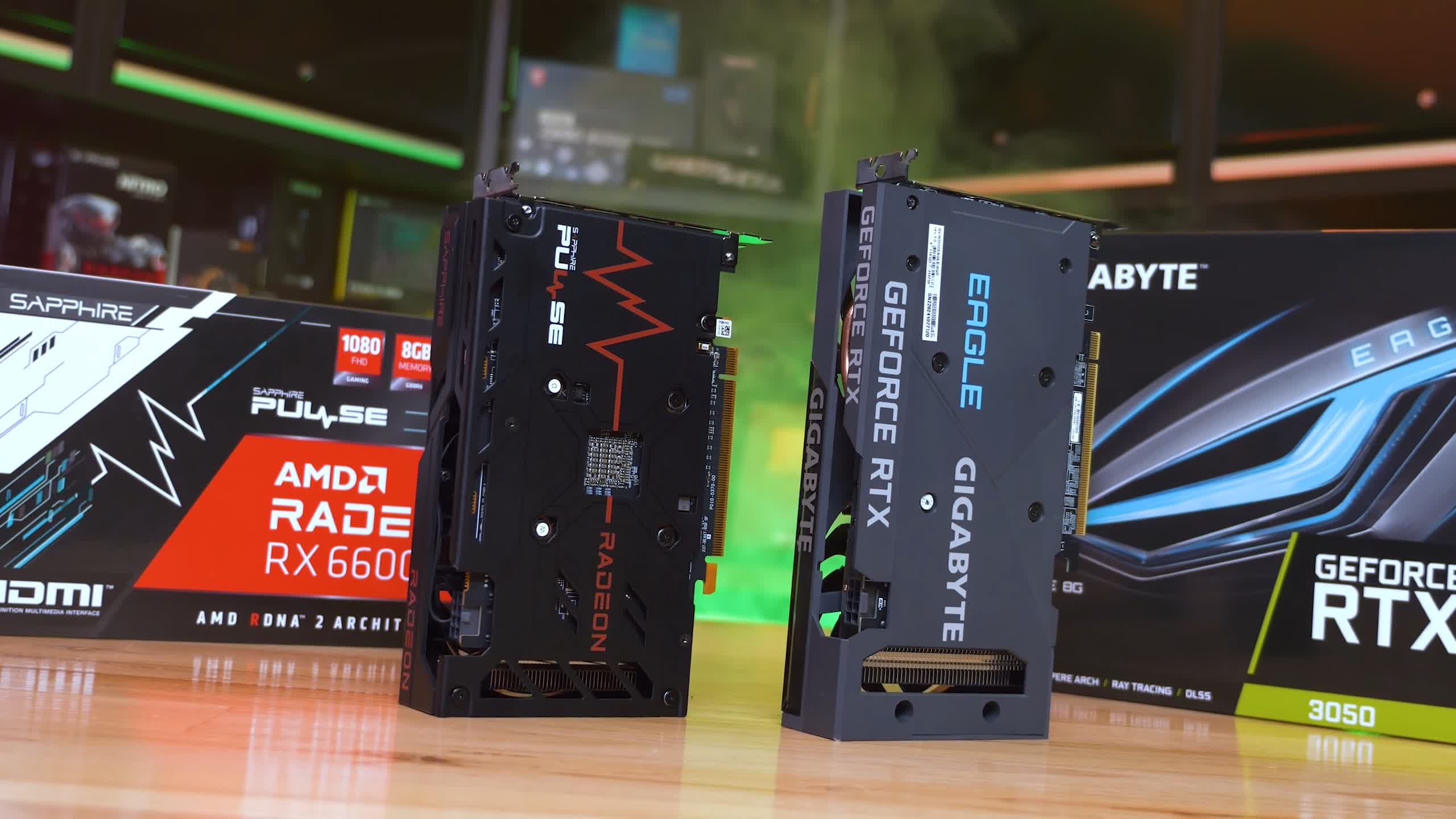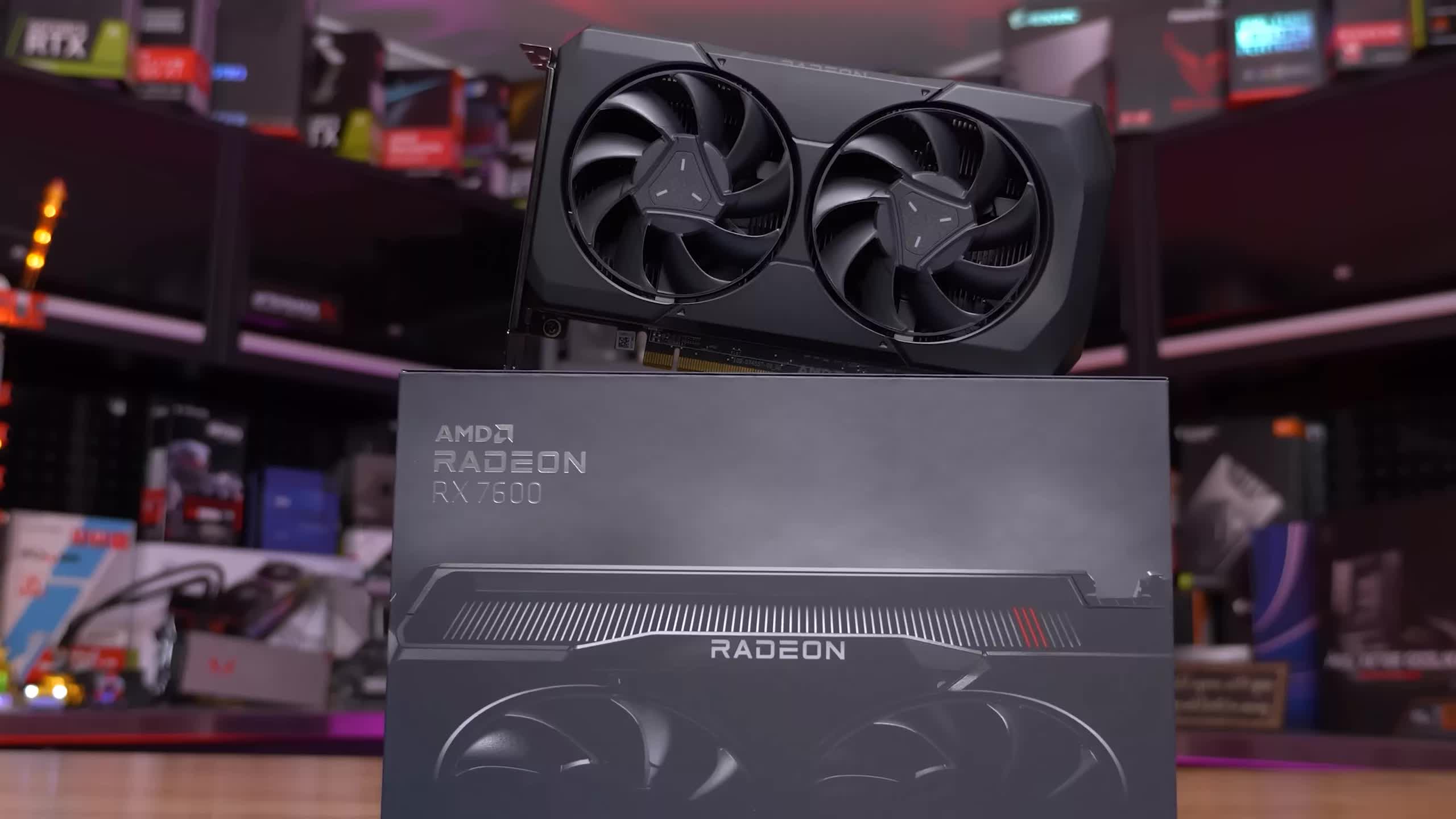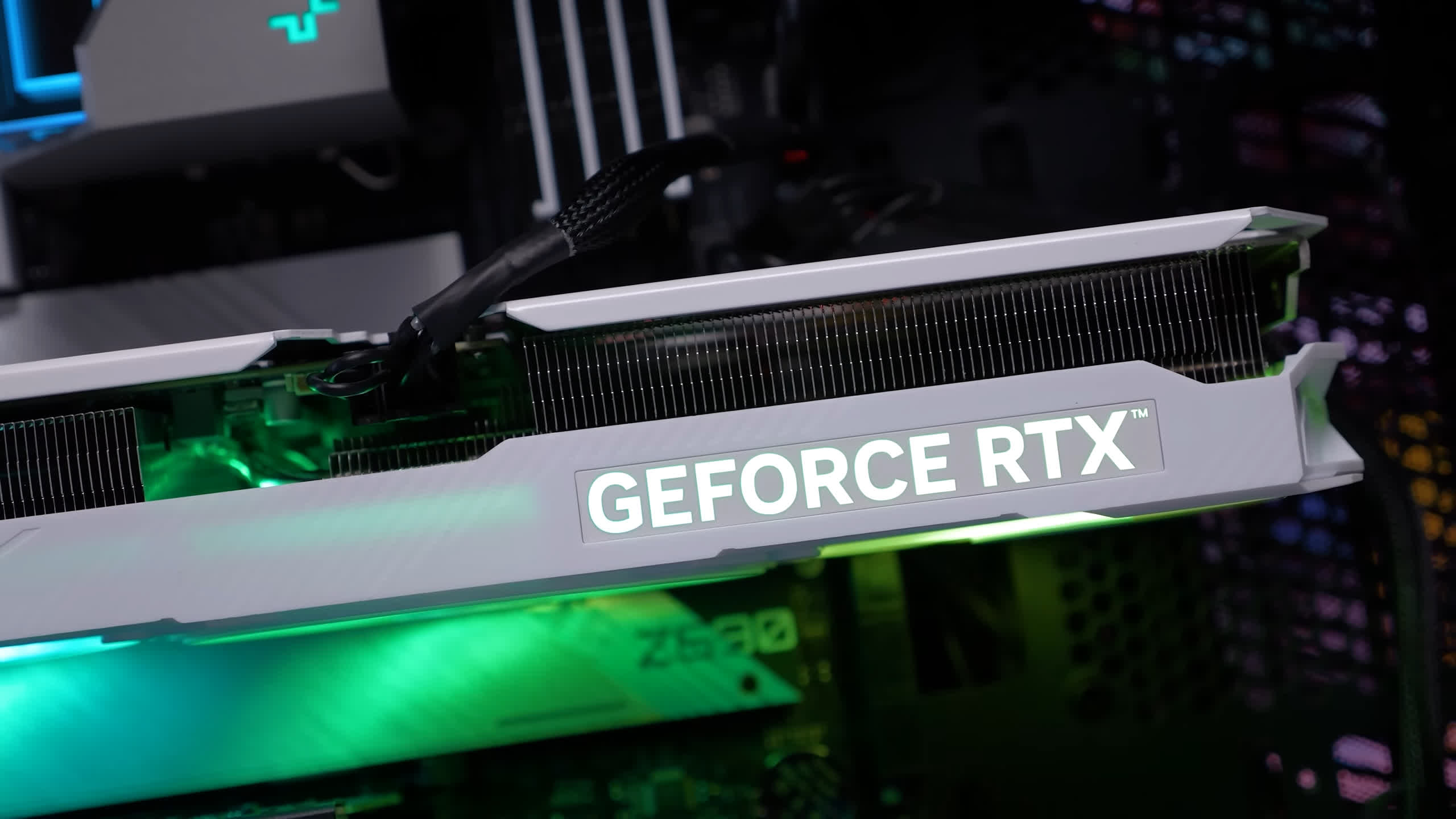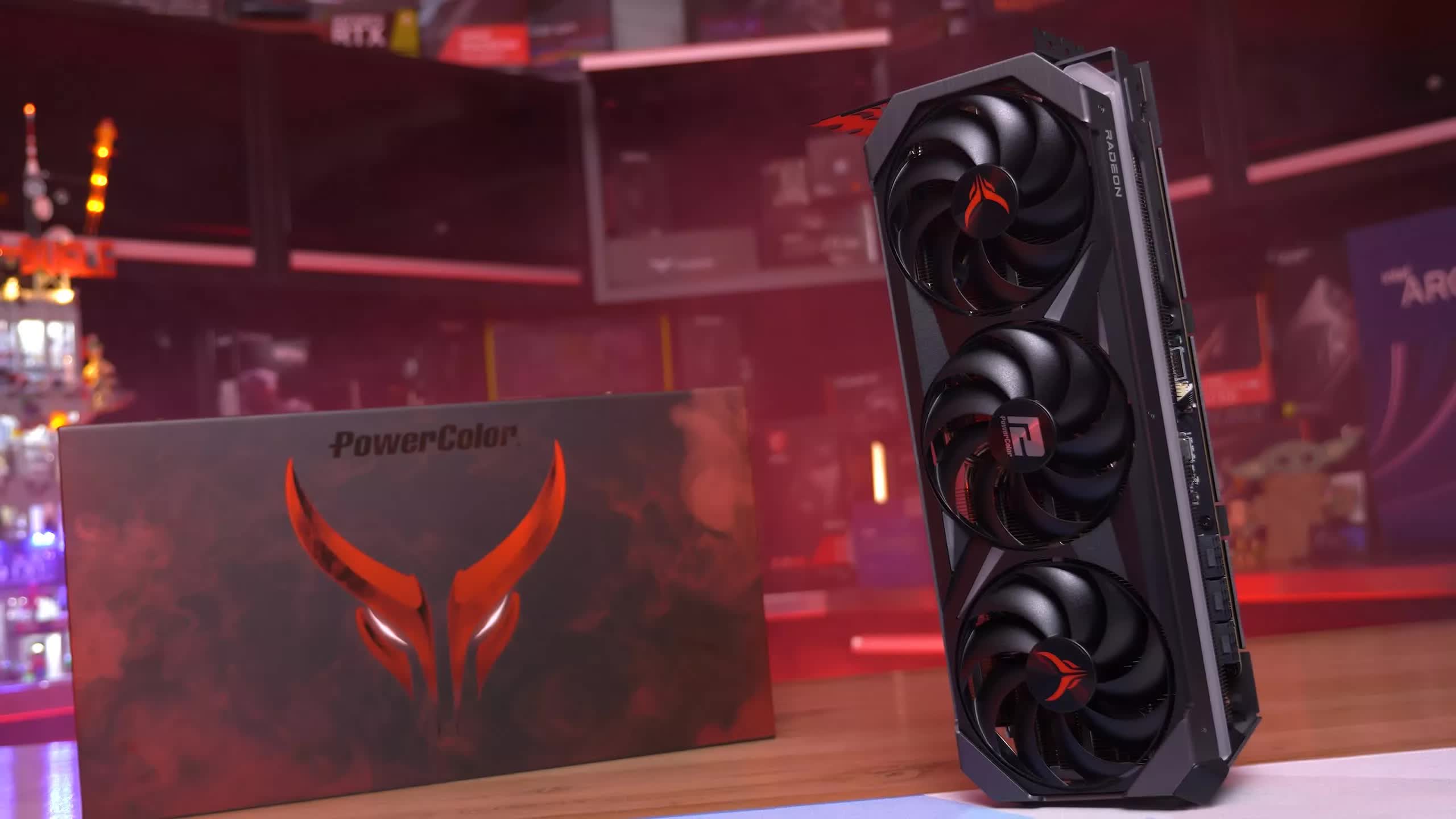When it comes to GPUs and graphics cards, we go in full depth. Year after year, we test dozens of GPUs from Nvidia, AMD, and now Intel, to determine which are worth your money and which are dead on arrival. To simplify the process of choosing a new graphics card, TechSpot's Best GPUs guide aims to answer one simple question: Given a specific budget, which graphics card should you buy?
As we recently discussed in our GPU Year in Review feature, the current generation of graphics is quite robust. However, the cost is significantly higher compared to previous years, leading to a perceived lack of value and consequently, lower levels of excitement. Regrettably, we don't foresee a major change in this trend anytime soon. Although we expect a few new releases in the first half of 2024, none are likely to make a substantial difference while GPU manufacturers prioritize high-margin datacenter and AI hardware.
In today's guide, we'll go over the current GPU market from top to bottom, providing our top picks at each price point. We have a wide range of GPUs to cover, starting from the most affordable options and working our way up to the most expensive ones.
Entry-level GPUs: From $120 up to $250
AMD Radeon RX 6600
Starting with the most affordable graphics cards, you won't find any current-gen GPUs in this segment. From AMD, you have the choice of the Radeon RX 6400 for $120, the 6500 XT at $140, the 6600 at $190, or perhaps the 6650 XT, though this one exceeds $200 at $240.
From Nvidia, there's the disappointing GTX 1630 at $135, the more appealing GTX 1650 at $170, the RTX 3050 at $230, the GTX 1660 Super at $200, and then the GTX 1650 Super. The latter, priced at $250, appears to be running low on stock, so you can ignore that. Newcomer Intel also has two options in this price range, there's the A580 at $170 and the A750 at $200.
When looking at the lower-priced options, we're comparing the RX 6400, 6500 XT, and GTX 1630, all priced below $150. Frankly, they are all terrible options, but the 6500 XT stands out as the least unsatisfactory choice among them. Despite being limited to PCIe 3.0, the 6500 XT is almost 70% faster than the GTX 1630 while costing $5 more. Both models come with just 4GB of VRAM, making them unsuitable for high-end gaming. However, at the lowest quality settings and 1080p resolution, the 6500 XT can deliver 30+ fps in most modern games.
But, in general, we strongly advise to overlook these lower-end options, as their performance is lackluster. Instead, consider adding an extra $50 for the Radeon RX 6600. While still a budget product by today's standards, compared to the 6500 XT and GTX 1630, it performs significantly better, offering 1.7x the performance of the 6500 XT and 3.6x that of the GTX 1630.
To put it another way, the Radeon RX 6600 is on average 78% faster than the 6500 XT and costs just 36% more. If you limit the 6500 XT to PCIe 3.0 instead of 4.0, the RX 6600's performance advantage skyrockets to 127% faster. Just as important, the 6500 XT has only 4GB of VRAM, while the RX 6600 comes with 8GB.
The Intel A580 and A750 GPUs are decent options. Priced similarly to the Radeon 6600, the A750 generally performs a bit faster, while the A580 offers comparable performance at a slightly lower price. We wouldn't discard them as alternatives but it's important to note that Arc GPUs require a system with Resizable BAR support to perform this well. Although Intel has made significant progress on drivers, we always run into issues when benchmarking these GPUs across a wide range of games, especially new releases, and new driver updates to fix issues can take days or even weeks to become available.
The Radeon RX 6600 is our number one pick for budget builds, with Intel GPUs coming in as a secondary choice, with no real competition from Nvidia in this segment. The RTX 3050 ($230) is slower than the RX 6600 by a ~30% margin. The RTX 3050's pricing also puts it in competition with the $240 Radeon 6650 XT, which is about 20% faster than the standard 6600, making the latter the best value and the GeForce an absolute no-go.
Mainstream GPU (Current-Gen) at $300
Nvidia GeForce RTX 4060
If you don't want to buy a previous-gen GPU, but still want to spend as little as possible, your options are the Radeon RX 7600 or Intel Arc A770 for $270 or the GeForce RTX 4060 for $300. These are 8GB graphics cards, except for Intel's GPU which offers 16GB, but none are particularly outstanding in terms of performance.
Performance-wise, both AMD and Nvidia models are about the same, offering previous generation low-end performance at a slightly better MSRP. Compared to the Radeon RX 6600, these are ~25% faster but cost at least 40% more, and almost 60% more in the case of the RTX 4060.
Based on our 15-game average data from the RTX 4060 review, the GeForce GPU produced an average frame rate of 91 fps, whereas the RX 6600 managed 71 fps. This makes the newer, more expensive GeForce GPU ~28% faster. If maximizing value for money is your priority, purchasing the Radeon RX 6600 and accepting a slight performance decrease can lead to substantial savings. However, if you're set on a current generation GPU, either the RX 7600 or RTX 4060 will do.
We feel that, in this instance, the GeForce GPU is worth the premium, as it is only 11% more expensive and offers access to DLSS and Frame Generation. However, the effectiveness of these technologies is debatable for a low-end product designed primarily for 1080p gaming. Ideally, based on their specifications, the RTX 4060 and company should be priced at $240 or below, but unfortunately these ideal prices are not reflective of the current market.
Mid-range Performance: $400 to $550
Radeon RX 7700 XT or GeForce RTX 4060 Ti 16GB
Upgrade pick: GeForce RTX 4070
Stepping up the budget significantly to the $400 to $550 range, you have the option of five current-generation GPUs. The least expensive option is the 8GB RTX 4060 Ti, priced at $400 – for an 8GB graphics card in today's market, that's excessive. Fortunately, the 16GB RTX 4060 dropped from $500 to a more reasonable $450. Therefore, there's little justification for choosing the 8GB version; it's better to opt for the 16GB model, or perhaps consider the Radeon 7700 XT.
The Radeon 7700 XT had a lukewarm reception at launch, as its MSRP was only $50 less than the 7800 XT, representing a mere 10% savings for a product that was 16% slower and had 25% less VRAM. However, AMD has since adjusted the pricing, raising the 7800 XT's MSRP from $500 to a more profitable $550.
As a result, the Radeon 7700 XT is now 19% cheaper than the 7800 XT, making them similar in terms of cost per frame. So, with the 7700 XT becoming a viable option, is it worth buying for $440, or is the 16GB RTX 4060 Ti for $450 a better deal?
For rasterized performance, the 7700 XT is 14% faster, and for ray tracing, the margins can be similar in games like Fortnite, though other titles like Cyberpunk 2077 heavily favor the GeForce GPU. Generally speaking, neither GPU is robust enough to fully capitalize on RT effects, so in our opinion, RT performance is less critical in this context.
These are 1440p GPUs, so upscaling plays a more significant role than with the RX 7600 and RTX 4060. The RTX 4060 Ti also has more VRAM, though the jump from 12GB to 16GB is less impactful than going from 8GB to 12GB.
Choosing between the 16GB RTX 4060 Ti and the RX 7700 XT is challenging, as they are quite similar. However, prioritizing rasterization performance at this tier, we would lean towards the 7700 XT, which offers a notable improvement in 1440p performance, such as increasing the frame rate in Cyberpunk 2077 from 64 fps to 83 fps. Nevertheless, the generally superior DLSS quality at 1440p could sway us towards the GeForce GPU for the extra $10.
Then we have the 7800 XT priced at $540 and the RTX 4070 at $550. Both GPUs offer virtually identical performance. This time, AMD has the advantage in VRAM capacity, but the increase is only an extra 4GB, going from 12GB to 16GB, which isn't likely to make a significant difference anytime soon, at least not for most new games.
At a similar price point, we believe the GeForce RTX 4070 is the better deal. It offers improved ray tracing performance and support for DLSS. The 7800 XT would need to hit a price point closer to $500 before we would consider it a more attractive option than the 4070.
The High-End: Benchmarking Your Budget
Radeon RX 7900 XT or Radeon RX 7900 XTX or GeForce RTX 4080
With a more ample budget for a graphics card, your options in this segment include the GeForce RTX 4070 Ti or Radeon 7900 XT for $780, or if you can stomach it, the Radeon 7900 XTX at $970 and the RTX 4080 at a hefty $1,200.
The battle between the RTX 4070 Ti and the Radeon 7900 XT is heavily stacked in favor of the Radeon GPU at the same price point. Based on our data, the 7900 XT is ~8% faster on average for rasterized gaming, a modest win, and then 7% slower on average for ray tracing, although the margins here will vary greatly depending on the games used for testing.
Overall performance is generally similar, but our main issue with the RTX 4070 Ti is paying $800 for a mere 12GB frame buffer. While that seems sufficient for now, we feel more comfortable recommending a product with the same performance and price but with a 20GB buffer. This might seem excessive, but it's also reassuring. For instance, we've seen how much better the 16GB Radeon RX 6800 aged compared to the 8GB GeForce RTX 3070, particularly with texture issues in games like Halo Infinite. It's a close battle, and convincing arguments can be made for either option, so we don't have a strong preference.
For those seeking even more performance, the Radeon 7900 XTX offers similar value to the XT version, delivering ~20% more performance for a 24% premium. It also has a bit more VRAM, although that might be superfluous.
The leap from the RTX 4070 Ti to the 4080 is more significant, not just in the 25% increase in performance, but also due to the 33% increase in VRAM capacity from 12GB to 16GB, which we believe is now the minimum for a high-end GPU. The price difference is notable: while the 7900 XTX is 24% more expensive than the XT, the RTX 4080 is 54% more expensive than the 4070 Ti.
This means gamers face a 24% premium for the RTX 4080 over the 7900 XTX, a challenging premium to justify. The rasterization performance of the XTX is generally slightly better, with little difference overall. The significant advantage of the RTX 4080 is its superior ray tracing performance, especially in titles heavily utilizing RT effects. Then there's DLSS, which surpasses FSR for upscaling and frame generation, though the difference is less noticeable at higher resolutions.
Choosing between the two could be quite challenging, depending on your preferences. The RTX 4080 is the better choice if ray tracing performance is a priority, but for rasterization performance, the 7900 XTX offers greater value. There's no clear winner, and certainly no wrong option; it will ultimately depend on your priorities.
Money Means Nothing – Give Me the Best
Nvidia GeForce RTX 4090
Our final pick is quite straightforward. If you want the best of the best and aren't concerned about the price, you're Nvidia's favorite sort of person. Step right up and let me introduce you to the RTX 4090 for a cool $2,000 – it's meant to cost $1,600, but Nvidia decided that's too cheap, so $2,000 it is. Buy enough of them and it will be $3,200 before you know it, oh wait, Asus already did that.
The RTX 4090 wins the ultimate high-end GPU category by default. There's no competition from AMD as it offers ~25% more performance than the 7900 XTX, and while it might cost over 100% more at retail, select gamers who want the best there is appear more than happy to pay the premium. That means the RTX 4090 has been a massive success for Nvidia, so don't expect the next generation of extreme GPUs to be any cheaper, if anything the safe bet would be for prices to increase, oh my.









